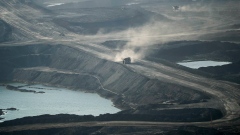Aug 9, 2023
Canadian oil-sands emissions steady even as production rises
, Bloomberg News
Strathcona, Pipestone acquisition to create Canada’s 5th-biggest oil company
Canadian oil-sands producers — struggling to shake off their image as pumping some of the dirtiest crude in the world — logged a rare win last year: Emissions held steady even as production increased.
It’s the first time emissions haven’t climbed absent a major market disruption and decline in output, S&P Global Commodity Insights said, citing its records going back to 2009.
“That emissions held steady even as production grew is a significant first,” said Kevin Birn, the group’s chief analyst for Canadian oil markets.
Absolute emissions remained flat at 81 million metric tons of carbon dioxide while total oil-sands output rose by more than 50,000 barrels a day to 3.1 million barrels a day, S&P said. Emissions levels held as output from more efficient sites increased. Since 2009, the average emissions intensity of oil-sands production has dropped by 23 per cent.
Further improvements are expected in the years ahead, though Birn warned last fall the sector’s emissions could get worse before getting better.







